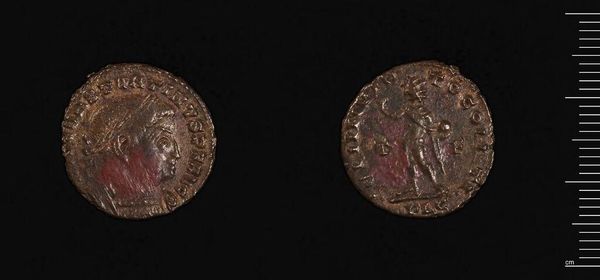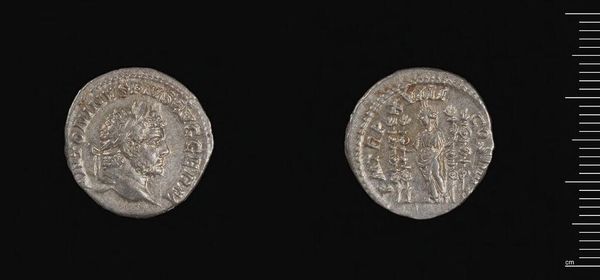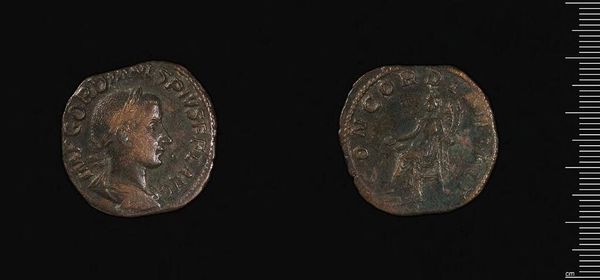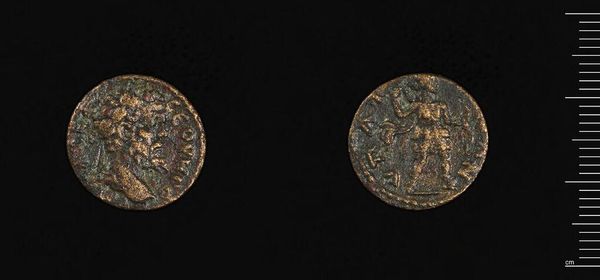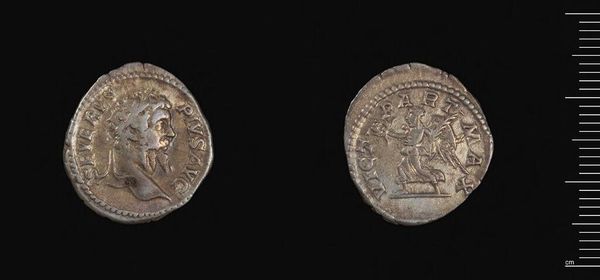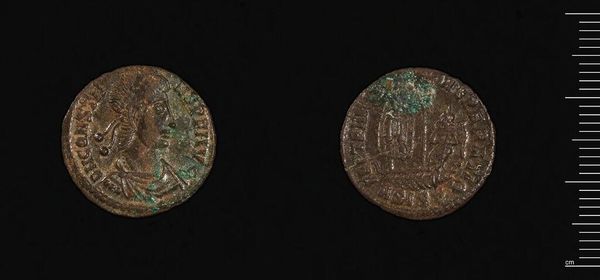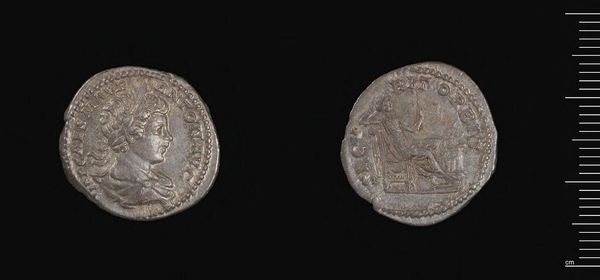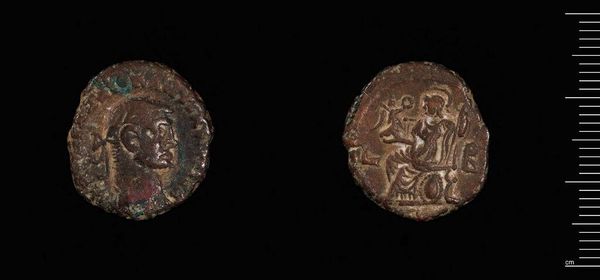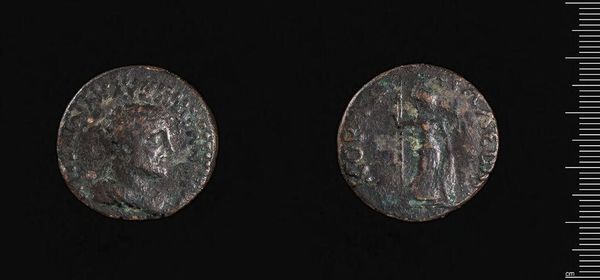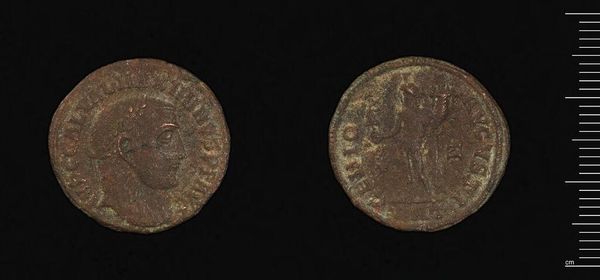
Dimensions: 2.72 g
Copyright: CC0 1.0
Curator: The Follis of Constantine I, minted in Cyzicus, presents a fascinating glimpse into early imperial coinage. What are your initial impressions? Editor: It appears quite worn. The patinated surface lends the coin a somber gravitas, and the incised imagery is difficult to decipher, requiring careful viewing. Curator: Indeed. The coin served as a crucial tool for disseminating imperial propaganda and facilitating trade. Its materiality speaks volumes about the Roman economy and the emperor's control over resources. Editor: I'm struck by the composition. The profile portrait on the obverse is standard, but the reverse features a more complex grouping that appears to depict the emperor in divine company. Curator: The coin offers insight into the socio-political landscape of the era, reflecting Constantine's efforts to consolidate power and legitimize his rule. Editor: A close examination reveals that the linear patterns and figural arrangements are more than just decorative; they function as a visual language to communicate power and authority. I’m still processing what it means for us today. Curator: It speaks volumes about the relationship between labor, power, and representation in antiquity. Editor: It's a powerful, if compact, demonstration of how visual symbolism and material production intersect to shape historical narratives.
Comments
No comments
Be the first to comment and join the conversation on the ultimate creative platform.
